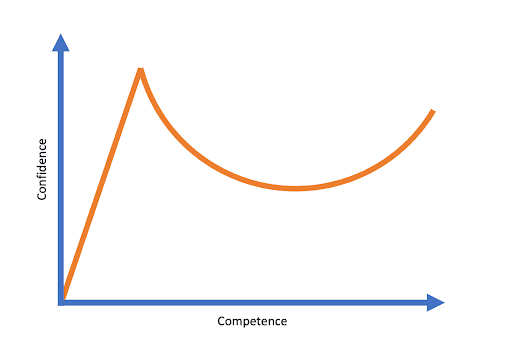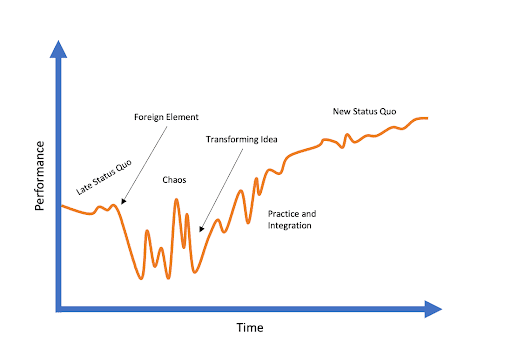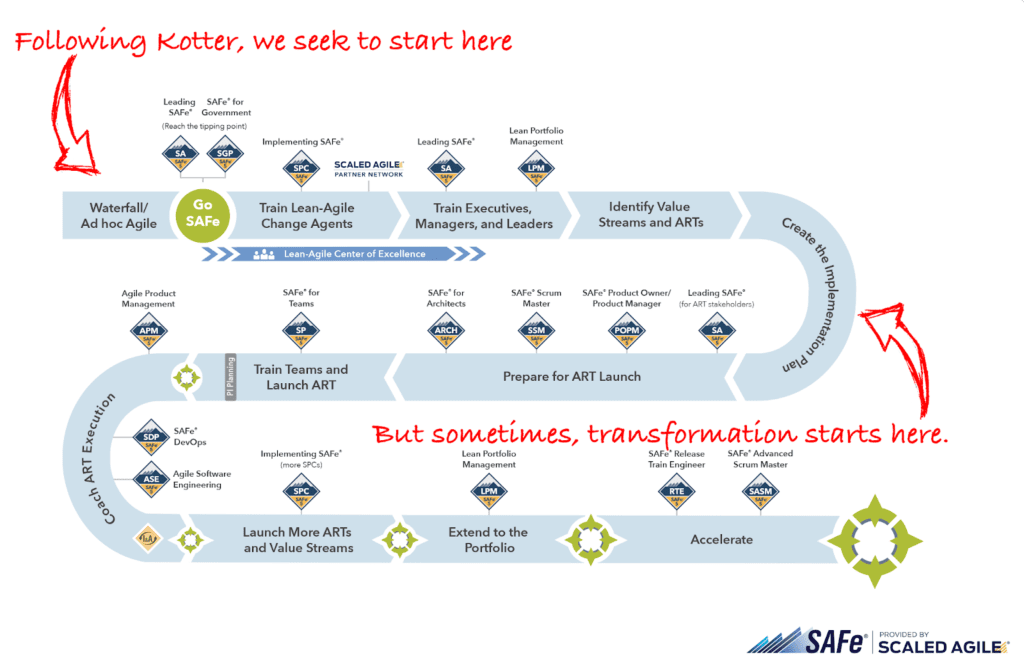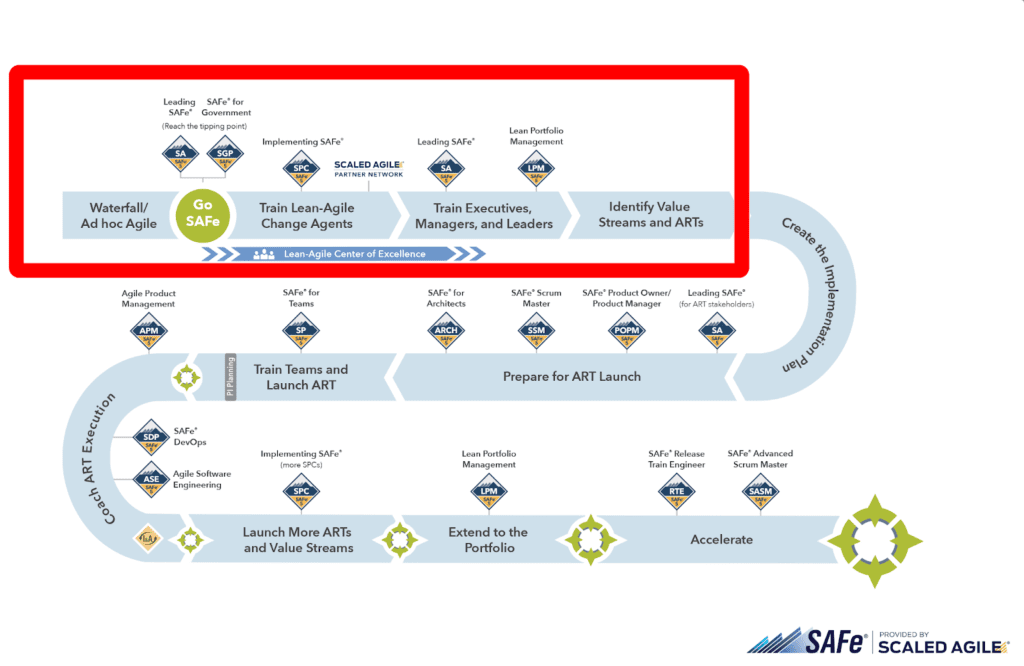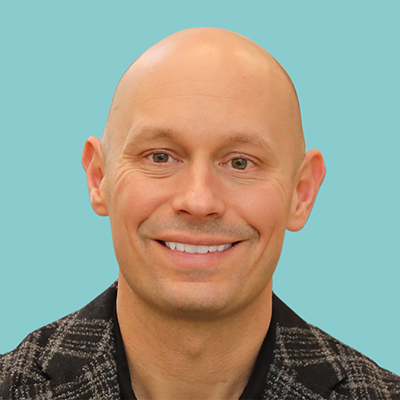A little SAFe history …
It was May of 2012, the year that the Mayan calendar said the “great cycle” shall come to an end. And with every cycle comes a new cycle. This new cycle was the beginning of an evolution of knowledge, sharing, and learning around how society builds the world’s largest systems.
For those of you who’ve followed the history of the Scaled Agile Framework® (SAFeⓇ), you’ll remember that the book Agile Software Requirements had just been published in 2011. And you’ll also recognize this book as the foundation and initial version of the Scaled Agile Framework. Just open the front cover and you’ll find Dean Leffingwell’s initial “Big Picture” rendition of the Framework. The book itself was fueled by Dean’s 2007 — 2008 blog series, where he published the initial articles and concepts within Scaling Software Agility and Agile Software Requirements, both books that helped move the market.
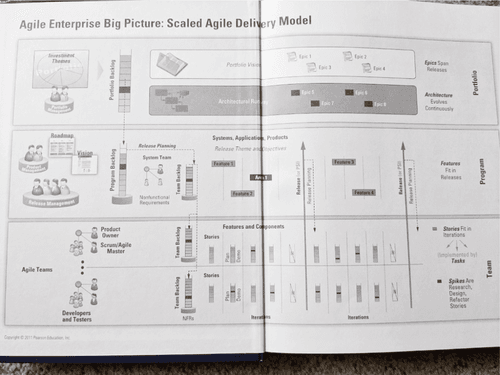
The book unfolds the “why” behind the Framework. Dean discerns that to scale agility, an aspect of Lean is requisite. He further goes on to state that Lean is required to scale agility because of its focus on value streams, principles, and tools that enhance value delivery to customers and its elimination of waste in the development process. You’ll also recognize the influence of Don Reinertsen’s Principles of Product Development Flow as some of the early concepts within the Framework. What you may not know is that the publication of Don’s book caused Dean to go back to the drawing board and rewrite his book.
And for those who know Dean personally, you know that respect for people and culture is a passion of his that continues to be prevalent in Lean as well as in SAFe.
Now, while writing and sharing the book was clearly an affection of Dean’s, taking the knowledge and research in the book and translating it into a learning experience was also a passion. Today marks the anniversary of the first Scaled Agile Framework Certification class!
#1 SAFe Program Consultant Certification, May 25, 2012
Roughly 30 curious agilists attended the first SAFe® Program Consultant (SPC) certification. The course was a bootstrapped effort, invite-only. I remember Dean personally reaching out to those who had leveraged the early concept of SAFe.
At the time, I was a product owner. I was honored when my Lean leader said “yes” to funding and allowed me the time and opportunity to learn and evolve my knowledge of my role and how to better scale and build systems that our customers needed.
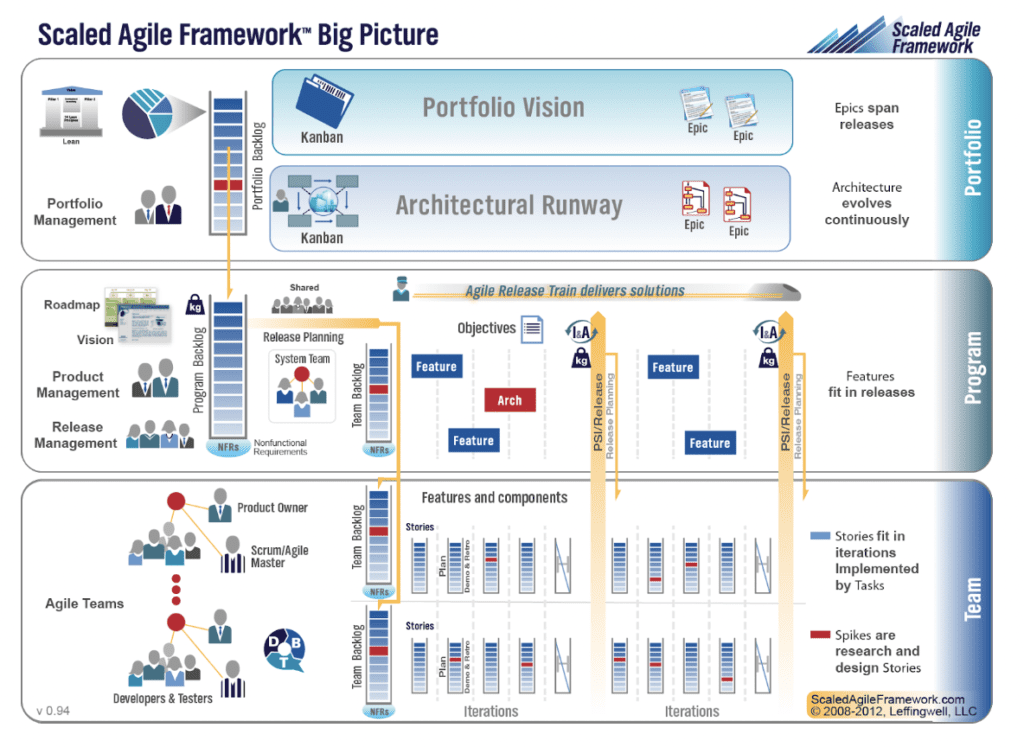
Taught based on V0.94 of the Framework (isn’t that a work of art?), the course introduced the concepts of Lean and Agile, roles and responsibilities, and the practicalities of scale. The class format was similar to today’s, with the first two days about the mindset and principles and the second two days focused on implementation techniques such as identifying value streams and “finding the kidney,” which is a metaphor for identifying who within the organization contributes to value creation and designing Agile Release Trains (ARTs).
It was hosted at the f/k/a Rally Software headquarters in Boulder, Colorado. Instructors included Dean Leffingwell, Alex Yakyma, Drew Jemilo, and Colin O’Neil. Enterprise representatives included Nokia, McAfee, Mitchell International, EMC, Tendril (the case study in Agile Software Requirements), and Nordstrom. And of course, there were the consultants represented by IconATG, Rally Software, Blue Mercury, and Net Objectives.
In the true spirit of SAFe, the class was full of hands-on experiential exercises, teaming within the class, and knowledge that helped create the evolution and advancement of our traditional Agile mindsets to Lean-Agile mindsets.
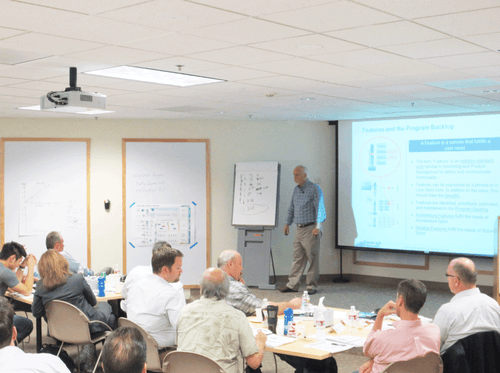
There was even a proctored exam on the last day. If memory serves me, there were at least 30 essay questions and about 75 percent of the class graduated as the first SPCs!
I fondly remember chatting with Drew Jemilo, envisioning what SAFe could be in a decade. I can honestly say that the market has validated the need and exceeded all of our visions and expectations. It’s helped tens of thousands of organizations organize and deliver the highest-value products and solutions to their customers and created a powerful career market for lifelong learners, partners, and consultants.
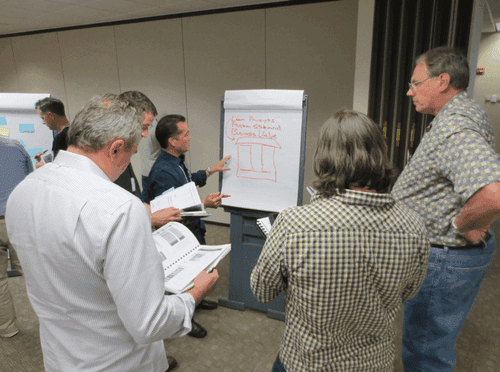
Fast Forward 10 Years
The Framework has never stopped evolving and adapting to the field. Perhaps that’s what makes it unique: continuous value delivery to its customers. As humans, we thrive to evolve and learn, and this enables the sharing of knowledge from people like you.
Some of the latest enhancements include the addition of Principle #10: Organize around value (which was always present, just not as detailed and prevalent) and the seven core competencies of the Lean enterprise, which are crucial to achieving and sustaining your competitive edge.
Today, more than 1,000,000 practitioners and 20,000 enterprises worldwide in nearly every industry trust SAFe. Gartner names SAFe the #1 most considered and adopted framework for scaling Agile. If we were to apply Geoffrey Moore’s technology adoption curve from his book Crossing the Chasm to SAFe, it would most likely be in the early majority, and even in the tornado phase.
If there’s one thing for certain, customers are seeing results, and the Scaled Agile Framework has evolved its initial mission of “Better software and systems make the world a better place.” Today, Version 5 represents the most ambitious expansion of that mission in our history: to enable the business agility that is required for enterprises to compete and thrive in the digital age.
Sincere gratitude to my friend, Alex Yakyma, who helped maintain SAFe history with the visuals and helped refresh my memory of the event.
Learn more about the evolution of the Scaled Agile Framework, follow the SAFe blog, and join us at the 2022 SAFe Summit!
About Jennifer Fawcett
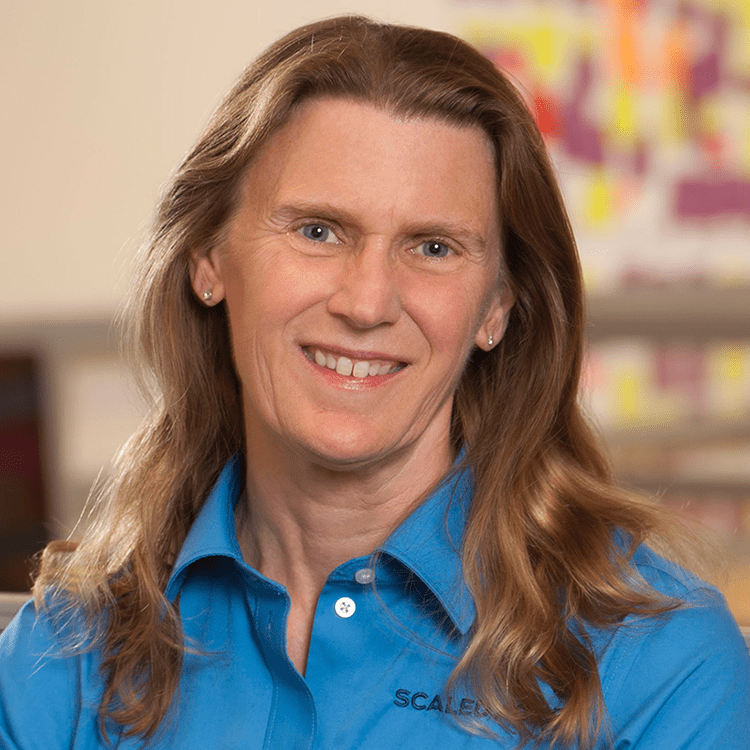
Jennifer is a semi-retired, empathetic Lean and Agile leader, practitioner, coach, speaker, and consultant. As a SAFe Fellow, she contributed to and helped develop SAFe content and courseware. Her passion and focus have been delivering value in the workplace by creating communities and culture through effective communication, product management, product ownership, executive portfolio coaching, and compassionate leadership. She has provided dedicated service in these areas to technology companies for over 35 years.

